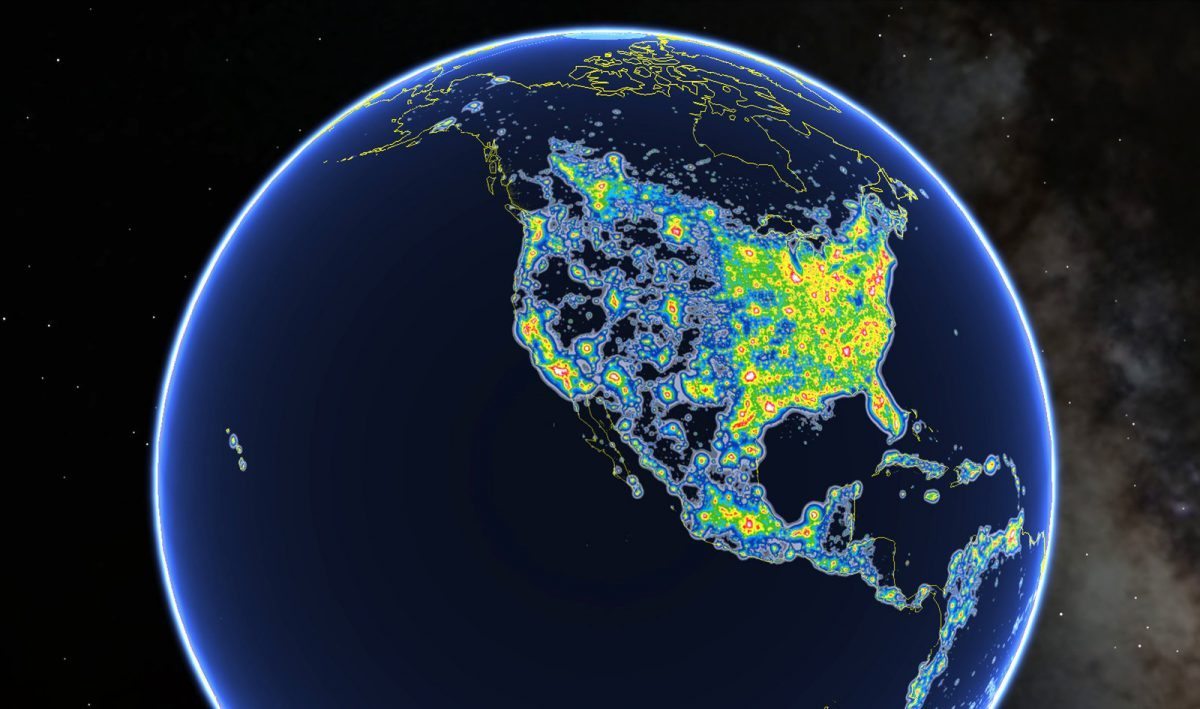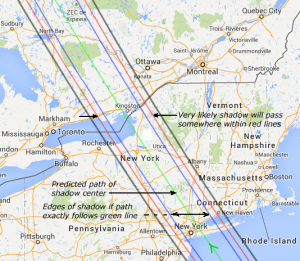Our small world orbits a star in a cosmic sea. Our Sun sails through the galaxy with over 200 billion of its siblings. This sea of stars has many names: Silver River, Lugh’s Chain, the Merchant’s Road, but its most common name is the Milky Way. It’s a delicate veil of light, astonishing in its fragility and grandeur. It’s appearance has been central to the folklore of cultures across the globe. That’s because there was a time when the Milky Way could be seen at some point of the year from anywhere in the world. But that’s no longer true.
While the Milky Way is always there, it’s also rather faint. As humanity has moved from campfires to electric lights the amount of light pollution has increased. In recent years the rise of LEDs has further reduced our view of the night sky, since the bluish color of LEDs is particularly bad in terms of light pollution. We’ve now reached the point where a third of the world can no longer see the Milky Way. In Europe more than 60% are unable to view that starry veil, and in North America it’s hidden from more than 80% of the population. A cosmic phenomena seen for millennia is now being banished from view.
It’s easy to dismiss as a minor loss unless you’ve actually seen the Milky Way with your own eyes. Anyone who has stood under a clear night sky remembers it. Its appearance is transformative. It fills you with wonder, and for years afterward you will tell the story of that time you truly saw the Milky Way. Its loss is not simply a fading of the night, it’s a disconnect from our cultural heritage. No matter where your ancestors hailed, they looked up and the great starry veil in amazement. They told stories of it, and wondered of its origin.
If you haven’t seen the Milky Way, make it a priority. Give your children an experience they will remember for the rest of their lives. Make a connection to the cosmic sky that is your birthright. For if we lose it, we will be a civilization lost at sea.
Paper: Fabio Falchi, et al. The new world atlas of artificial night sky brightness. Science Advances, Vol. 2, no. 6, e1600377 (2016) DOI: 10.1126/sciadv.1600377












Comments
At least some of the native peoples of Australia (aborigines) used the “dark lanes” in Milky Way as “constellations”, the Emu in the sky for example. There’s a rock carving of this in a national park, north of Sydney; while it may still be possible to see this constellation today, from there, it is surely far harder to see than it was, before 1788 (here is a photo of the rock carving, and the part of the Milky Way above it, certainly not what you’d see with your unaided eyes! http://emudreaming.com/Examples/emu.htm).
Thank you. I’ve been thinking about a trip to the southern hemisphere specifically for seeing the Milky Way. Australia… maybe.
There’s subtle irony in that it takes a 1MW strobe reveal something cloaked by light pollution. 🙂
In my fictional world, a war on anthropogenic light pollution culminates in a “lights out” edict for all of the world. The policy results in an unforeseen dystopia which advances humanity in the eyes of some.
Mankind is swimming in a spaceship earth with the milky way ,starry galaxies in vast cosmic universe like a bubble blue ball . A wonder in the creations of Creator. Man may ponder & know the Truth and the Originator.
Having grown up and lived most of my life in a part of the US where it’s not visible, nor does the area have any topographic features to speak of, the first time I saw the Milky Way and the first time I actually saw mountains first-hand were both absolutely amazing experiences for me. Even though parts of my area are dark enough to enjoy using a telescope, when I was in the north end of the Chihuahuan Desert at the US/Mexico border, I saw more beauty in the sky with my naked eye than I had ever seen through my scope. It was actually a bit humbling. And also incredibly inspiring. I will never forget it.